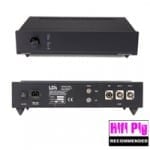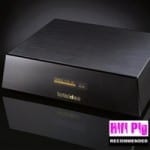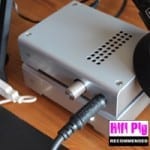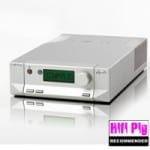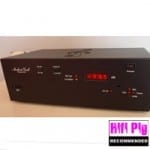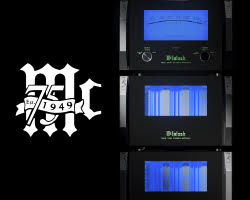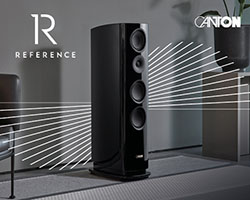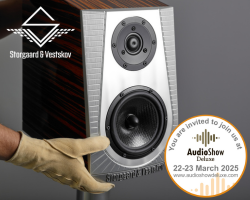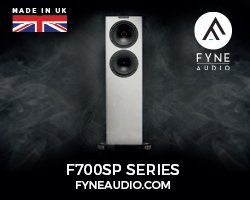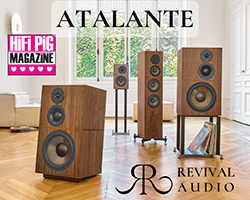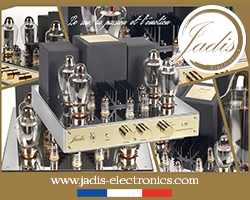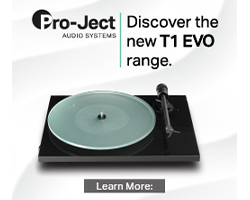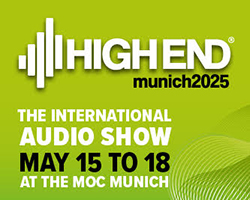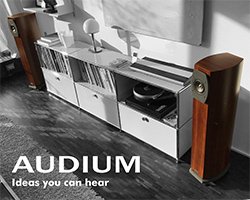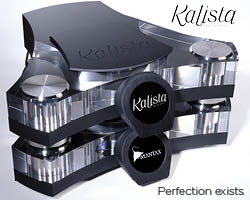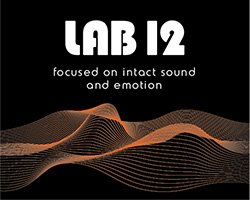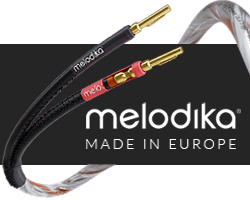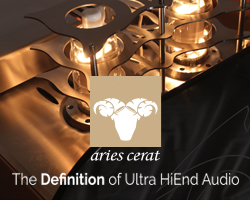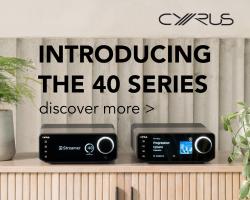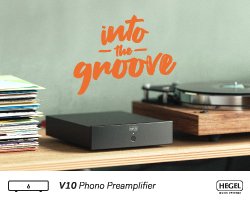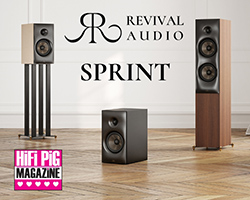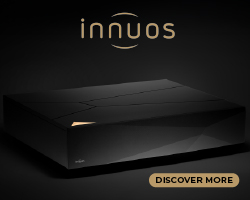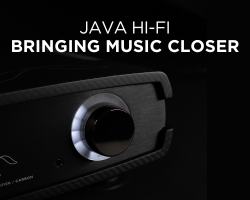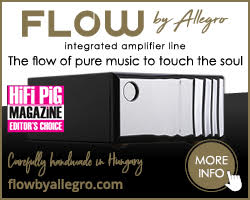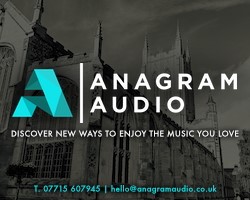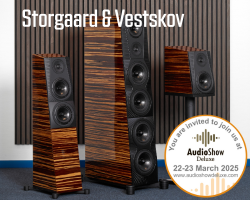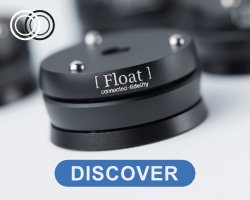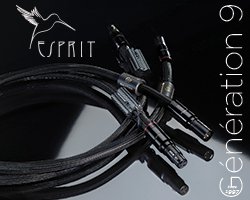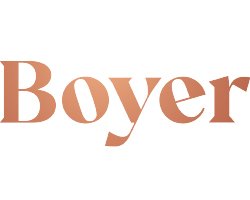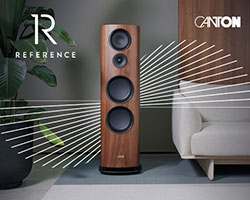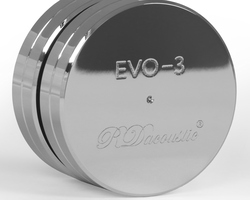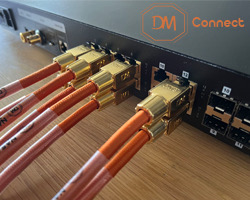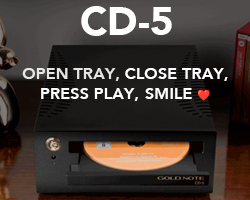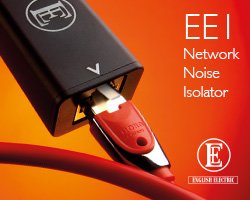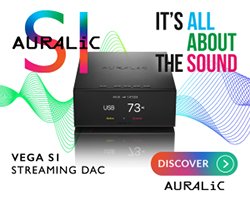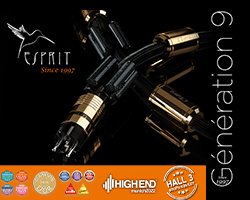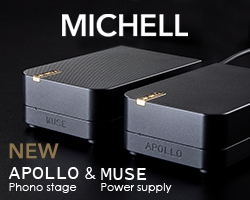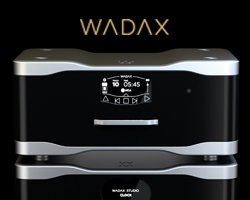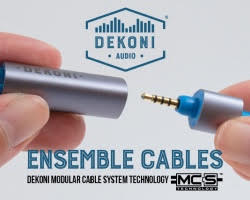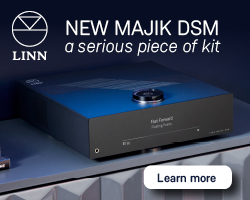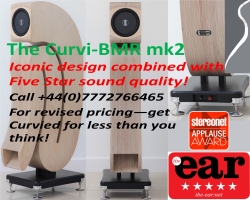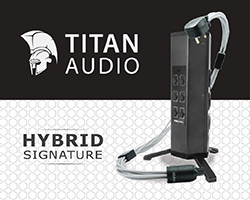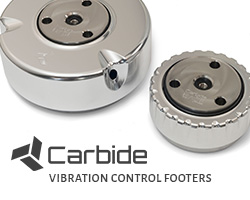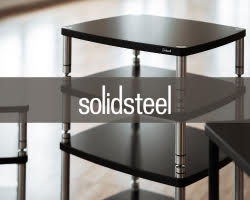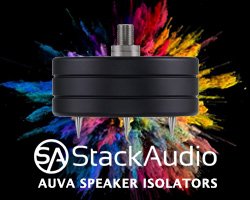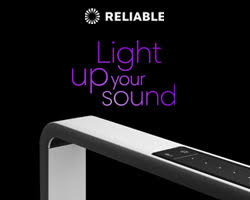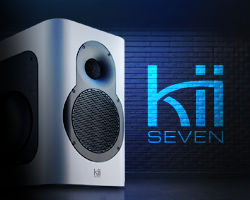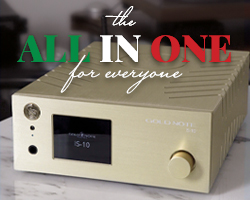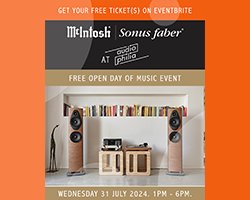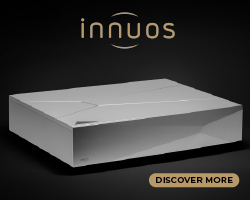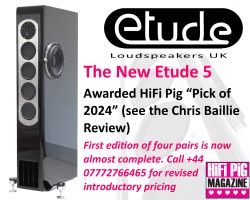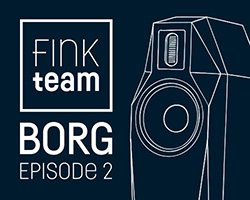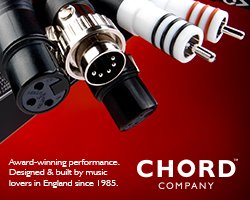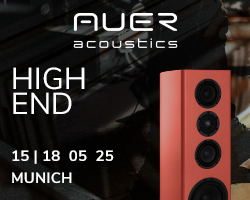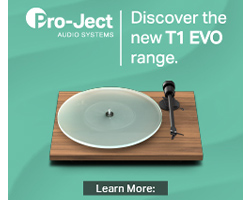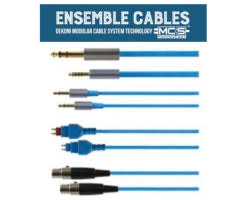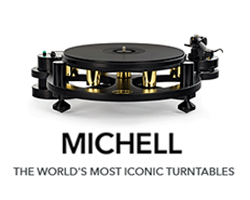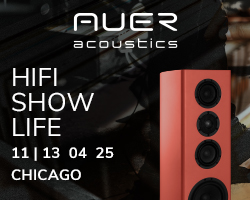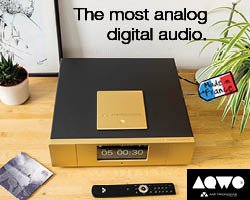Forming part of the bijou Chordette range, the new Qute EX adds a new chipset and circuit board which enables 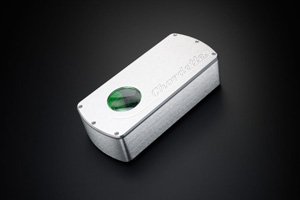 decoding at up to 384kHz PCM and DSD 128 over USB (against the QuteHD’s 192kHz PCM and DSD 64). Existing QuteHD DACs can be upgraded with the new chipset and board at the factory for just £200 (plus shipping); the price differential between the two which seems very reasonable.
decoding at up to 384kHz PCM and DSD 128 over USB (against the QuteHD’s 192kHz PCM and DSD 64). Existing QuteHD DACs can be upgraded with the new chipset and board at the factory for just £200 (plus shipping); the price differential between the two which seems very reasonable.
The Qute EX offers a range of bespoke DAC technologies taken from the flagship QBD76 HDSD (£4,995), which forms part of Chord Electronics’ Choral range.
Ready to take advantage of today’s advanced studio-master-quality (DXD – Digital eXtreme Definition) music files, the Qute EX can handle sample rates from 44.1kHz to 384kHz (PCM).
The Qute EX benefits from an asynchronous USB input (up to 384kHz) and has to two additional digital inputs: coaxial and optical.
In addition to 384kHz PCM files, the QuteEX can also process DSD 128 data using the latest DSD-over-PCM standard (DoP). Whether using Mac OS or Windows OS, Chord Electronics’ own proprietary driver software is provided, removing the restrictions of current operating system audio playback.
Price: Qute EX £1,195
Norwegian-based manufacturer and quirkily named QNKTC (Quantization Noise Killed The Cat!) has unveiled its new 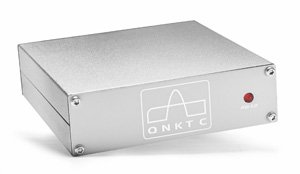 competitively priced DAC, the £110 AB-1.2.
competitively priced DAC, the £110 AB-1.2.
The device has is roots in an open source project, as a hardware implementation of the Audio Widget venture. The project was started by an online group who wanted to develop the very best solution for a USB DAC. AB-1.2 is the third (counting from 1.0) Analogue Board from the project. The AB-1.2 lets you play high-resolution audio (up to 24-bits at 192kHz) from Windows, Linux and OSX computers.
The analogue section of the DAC design puts equal focus on three areas with a fundamental influence on audio quality. The AKM4430 DAC chip comes from Asahi Kasai, the clock is made from two precision crystal oscillators from Golledge and the power supply uses low-noise regulators from Analog Devices. The DAC generates its own negative power supply, something that QNKTC say makes the whole design less complex and easier to implement. The asynchronous USB protocol (available in both USB Audio Class 1 and 2) makes the DAC the timing reference which is said to minimize jitter errors and further improves on the sound quality.
Light Harmonic, manufacturers of the Da Vinci DAC and Da Vinci Dual DAC, today launched a campaign on the 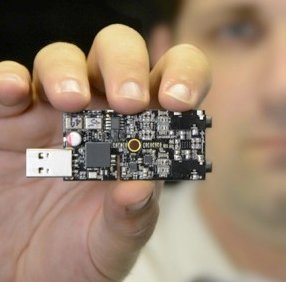 Kickstarter website to introduce “GEEK”, “a cutting- edge portable DAC and headphone amp”.
Kickstarter website to introduce “GEEK”, “a cutting- edge portable DAC and headphone amp”.
“We’re excited that we can take technology developed while designing and building Da Vinci DAC and Dual DAC, and bring it to the mass-market,” said Gavin Fish, Vice President, Sales & Marketing for Light Harmonic. “‘GEEK’ is the first portable DAC capable of playing DSD and double DSD files. It can play hi-res PCM files up to 384k, which is still rare for any DAC, but very rare for a portable one.
“GEEK” is a thumb drive-sized portable DAC and headphone amplifier that plugs into the USB port of a laptop or desktop computer. In addition to a DAC and headphone amp, “GEEK” features proprietary spatialization software which is said to produce the image of a 3-D sound-field around the listener and has two headphone jacks, allowing shared listening.
Backers of the Kickstarter campaign will have the opportunity to sample
“GEEK” for as little as $99 before it begins shipping in Q1 2014 to specialist audio retailers, big-box stores and online resellers, where it will sell at an MSRP of $299.
We’ve been keen at Hifi Pig to get hold of a couple of items from Schiit Audio for a while now as the company seem to  have a good attitude, offer good service and their prices seem to be very keen indeed.
have a good attitude, offer good service and their prices seem to be very keen indeed.
We managed to get our hands on the Modi USB DAC ($99) and the Magni Headphone Amplifier ($99) and put them through their paces.
“It’s that time of year again when new students are getting ready to pop off to university for the first time and so we’ve been on the lookout for a few systems that we think satisfy a few essentials for today’s music loving academic.
Carting a full blown analogue front end, full range loudspeakers and the vinyl associated with this kind of system off to the other end of the country isn’t really feasible for the vast majority and not always desirable for your average Joe who wants a great sounding system that takes up little space and is portable. With this in mind we got hold of a couple of items from Schiit Audio that seemed to fit our needs.”
You can read the full review of the Schiit Modi and Magni or any of the Hifi Pig reviews by following the highlighted links.
Meridian has announced the introduction of Director, the company’s latest DAC. Built in Britain, Director aims to 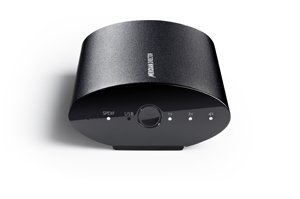 provide the link between digital sources and a conventional analogue audio system.
provide the link between digital sources and a conventional analogue audio system.
Featuring a range of connectivity, Director can be used with a wide selection of traditional components as well as USB based sources. Director features technology drawn from Meridian’s Reference 800 Series, offering up to 24-bit resolution and 192khz sampling and the full range of proprietary Meridian resolution enhancement technologies such as Upsampling and Apodizing.
- Takes digital audio from USB, Optical and Coax S/PDIF
- Up to 24-bit, 192kHz Digital to Analogue conversion
- Direct-coupled, fixed output for connection to an audio system
- Meridian Resolution Enhancement technologies including Upsampling and Apodizing
- Music grade power supply capacitors
Price is £449
Continuing a trend for smaller hifi, the cabinet of the XETAC DAC is based on the footprint of the Mac Mini and is made from a solid 1” (25mm) thick Aluminium plate by CNC machines in Germany. It uses small SMD components, also used in smartphones, allowing more than 200 precision mounted components to be inside a cabinet of only 1”x 7.7” x 7.7” or 25 mm tall, 197 mm wide and 197 mm deep.
The XETAC DAC will work with all computers, MS, Linux and Apple or with an an old CD or DVD player.
XETAC will increase its range of products in the future with a level controlled amplifier, a phonostage, a headphone amplifier, a preamplifier and several versions of its DACs
XETAC DAC 3 production orders are now being built for delivery and launch in September 2013 at a recommended retail price of €600.
Technical details:
- High End Analog Devices AD1853 24-bit/192 kHz Digital to Analog Converter IC
- Analog Devices AD 1895 Asynchronous sample rate converter is used for all 3 inputs
- All 3 inputs feature jitter reduction.
- All input frequencies are re-clocked and upsampled to 422 kHz
- USB input acepts 44.1 kHz, 48 kHz, 88.2 kHz and 96 kHz, 16 and 24 bit
- Accepts variable volume mode in Windows®
- Texas Instruments TAS1020B USB with Holm Acoustics firmware.
- The Optical TOSLINK digital input accepts 8 kHz, 11.025 kHz, 16kHz, 32 kHz, 44.1 kHz, 48 kHz, 88.2 kHz, 96 kHz, 16 and 24 bit.
- The RCA S/PDIF digital input accepts 8 kHz, 11.025 kHz, 16 kHz, 32kHz, 44.1 kHz, 48 kHz, 88.2 kHz, 96 kHz, 176.4 kHz, 192 kHz, 16 and 24 bit.
- National LM49740 amplifiers .
- 2 Volt RMS output
- Low 47 Ohm output impedance.
- Dual power inputs enable +12V -12V DC operation from batteries or Solar power.
In another World exclusive review Hifi Pig’s Dan takes a look at the new £1750 DAC X Signature from UK based Cyrus Audio.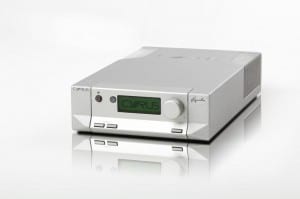
“The DAC X Signature is a twin 32-bit stereo DAC, designed in dual-mono configuration where the operational elements of the system, such as the digital control signals, are optically isolated from the twin mono DAC cards. The DAC X Signature also possesses a carefully specified power supply system based on a custom designed ultra-low-noise torroidal power transformer.
There are 3 x Optical SPDIF and 4 x RCA Coaxial connectors, unbalanced RCA outputs and balanced XLR too.”
Read the full review of the Cyrus Audio DAC X Signature.
The Audio Electronics by Cary Audio Lightning digital to analog converter (DAC) is now shipping and is available for purchase.
(DAC) is now shipping and is available for purchase.
The Lightning DAC uses Asynchronous Streamlength™ Class 2.0 USB audio technology for streaming computer USB audio. The Lightning DAC also has coaxial and Toslink inputs up to 24 bit/192 kHz resolution.
The Lightning DAC starts with a custom-built power transformer and a high-current power supply.
A Wolfson WM8805 chipset is used as the input receiver for the two SP/DIF digital audio inputs whilst the XMOS USB chip does asynchronous processing of USB computer based music. It is able to handle multiple 24 bit/192kHz channels with extremely low latency, all at 500 MIPS.
Once the digital bitstream is managed it is sent to the digital to analog conversion section, comprised of two ESS Sabre ES9023 24/192 DAC chipsets.
Dimensions: 13.5″ L X 14″ W X 2.5″ H
Retail price: $1,295
Benchmark have announced their new Digital to Analogue Converter the DAC2 D. The DAC2 D has the same performance of the company’s DAC2 HGC but without the analogue inputs and the 12V trigger.  Keeping the specs inline with DAC2 D, it has” lower noise, lower distortion, improved accuracy, outstanding musical detail, precise stereo imaging, an advanced digital filter design, and a new high-sample-rate Asynchronous USB Audio interface”. All inputs are isolated from interface jitter by Benchmark’s new UltraLock2™ jitter attenuation system. Internal digital processing and conversion is 32-bits, and includes 3.5 dB of headroom above 0 dBFS. Four balanced 32-bit D/A converter are summed together for each balanced output. Benchmark claim that the new DAC2 D has an analogue sound.
Keeping the specs inline with DAC2 D, it has” lower noise, lower distortion, improved accuracy, outstanding musical detail, precise stereo imaging, an advanced digital filter design, and a new high-sample-rate Asynchronous USB Audio interface”. All inputs are isolated from interface jitter by Benchmark’s new UltraLock2™ jitter attenuation system. Internal digital processing and conversion is 32-bits, and includes 3.5 dB of headroom above 0 dBFS. Four balanced 32-bit D/A converter are summed together for each balanced output. Benchmark claim that the new DAC2 D has an analogue sound.
Features:
- Sample Rate Display
- Word Length Display
- More Digital Inputs (5 total)
- More Analog Outputs (3 total)
- Digital Pass Through
- Native DSD Conversion
- Polarity Switch
- Asynchronous USB 2.0
- Driverless Asynchronous USB 1.1
- Home Theater Bypass
- Power Switch
- Low Power Consumption
Price is $1795
M2 Tech, the Italian hifi manufacturer that brought us the well received hiFace S/PDIF output interface and the Evo 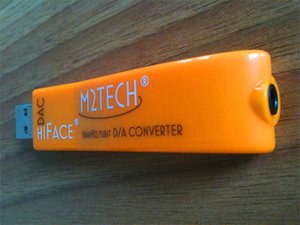 DAC, have introduced the hiFace DAC, an async 2.0 USB 384/32 DAC.
DAC, have introduced the hiFace DAC, an async 2.0 USB 384/32 DAC.
Details
The hiFace DAC includes: asynchronous data transfer mode on USB 2.0, compliancy to USB 2.0 Audio Class (no drivers needed for MacOS, IOS, Linux and Android), very low phase noise oscillators and last-generation conversion IC capable of 384kHz and 23 bits.
Windows users will enjoy it in Direct Sound, Kernel Streaming, WASAPI and ASIO (depending on the OS version), while Mac users will be able to take advantage from Integer mode and Direct mode.
While the hiFace DAC output is purposely designed to give its best with amplifiers’ and preamplifiers’ line level inputs, it may also be used to drive medium- and high-impedance headphones.
Specifications
Input 1 x USB A type male
Output 1 x 3.5mm stereo jack socket
I/O
Standard: Input USB 2.0 Audio Format,
Output stereo analogue
Sampling Frequency: 44.1kHz, 48kHz, 88.2kHz, 96kHz, 176.4khZ, 192kHz, 352.8kHz, 384kHz
Resolution: 16 up to 32 bit
Output voltage: 2.0Vrms @10kOhms
Frequency response: 5-22kHz (fs=44.1kHz) 5-150kHz (fs=384kHz)
THD+N: 112dB (@ 1kHz, A-weighted)
Dimensions: 8.8(d) x 1.4(h) x 2(w)
Power Supply: 5V DC from USB bus
Weight: 20gr approx.
Amphion and Antelope Audio will be co-exhibiting at the Sound & Vision Bristol Show in the United Kingdom, February 22 ![]() – 24, 2013. The two brands are going to demonstrate a few different set ups, starting with mastering quality to easy-to-use desktop systems.
– 24, 2013. The two brands are going to demonstrate a few different set ups, starting with mastering quality to easy-to-use desktop systems.
Visitors will have the chance to see for the first time in the UK the winner of the CES Innovations 2013 Design and Engineering Award, the world’s first 384 kHz digital audio preamplifier with integrated atomic clock – Rubicon.
In addition to seeing the Rubicon, visitors will be able to listen, and experience Antelope Audio’s 384 kHz USB D/A converters. The public will also have the chance to listen to original studio masters, from the same speakers with which they were mastered. Amphion Two15 studio monitors, as well as all other Amphion loudspeakers use waveguide technology and controlled dispersion,” which allow speakers to work in all acoustic spaces”.
Meridian has announced the introduction of its Explorer USB DAC. The Explorer is a pocket-sized high-resolution USB 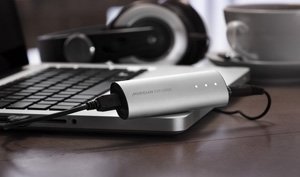 DAC from “that delivers best-in-class sound from any computer”. Featuring a range of connectivity, the Explorer can be used in a variety of applications from private headphone listening to full system playback.
DAC from “that delivers best-in-class sound from any computer”. Featuring a range of connectivity, the Explorer can be used in a variety of applications from private headphone listening to full system playback.
The Explorer is compatible with Mac, Linux or Windows computers and is a fully asynchronous, USB audio class 2 DAC.
Key Features
– 24bit/192kHz native conversion capability
– Separate low-jitter crystal oscillators for 44k1 and 48k based sample rates
– Asynchronous data transfer
– 6 layer PCB
– USB2 mini B socket – Plug and Play with MAC (Windows driver available)
– Direct-coupled outputs
– Variable line out – Full Analogue Volume Control for headphones or powered loudspeakers
– Headphone amp
– Fixed line out – 3.5mm connects directly to audio system
– Optical digital output – full resolution for receivers or DACS (up to 96kHz)
– Lights to indicate incoming sample rate
– Soft convenient USB cable provided for ease of placement to protect computer mother board from mechanical stress
– Hand assembled at Meridian’s UK headquarters.
Price £249, $299
KEF has announced the introduction of the X300A, an active design primarily conceived to partner a PC or Mac desktop  or laptop computer with inbuilt amps and DAC. Connection is via a 96kHz/24 bit USB digital input.
or laptop computer with inbuilt amps and DAC. Connection is via a 96kHz/24 bit USB digital input.
Unlike many typical active computer speakers, which have a single class D ‘digital’ amp on each channel, the KEF X300A has two class AB amps in each speaker, one for the LF/MF and one for HF.
Users have the ability to switch between desk, free space and desk/wall modes with high quality EQ, and the sound is adjusted to be optimal whichever location the speaker is put in. Desk and stand modes are selected by a switch on the rear panel of the master speaker; wall mode is selected via a foam plug for the rear mounted reflex port.
A standard 3.5mm analogue input is included so that mobile phones and MP3 players can be connected as a secondary source.
Price: £600.00 per pair.
British newcomer Computer Audio Design (CAD), is a specialist high-end audio company that aims to achieve the  “finest sound quality from computer audio sources”. Designed and hand-built in the UK, CAD’s debut offering, the CAD 1543 DAC, has been built as a “no-compromise” asynchronous USB DAC.
“finest sound quality from computer audio sources”. Designed and hand-built in the UK, CAD’s debut offering, the CAD 1543 DAC, has been built as a “no-compromise” asynchronous USB DAC.
The CAD 1543 DAC has been built on a design principle that seeks to minimise components in the signal path. The DAC is also unashamedly computer-orientated in recognition of today’s high-resolution digital music files and yet “has been designed to deliver the same natural, effortless sound that’s inherent in the best analogue source components.”
The CAD 1543 DAC is built around a dedicated, non-magnetic acrylic chassis, has been optimised to work with a computer and painstakingly designed to minimise disruption to the incoming signal. To this end, the DAC has a single high-quality USB input, plus one set of RCA outputs which the company says “enables the signal to pass through the DAC without encountering the highly degrading effects of unnecessary switching. It also allows a super-short signal path (of just 1cm) from the USB board to the DAC.”
Designed by Scott Berry, a British-based US-born electrical engineer, the 1543 DAC has been conceived over several years.
The CAD 1543 DAC also boasts “highly advanced” power supplies which have their own mains conditioning. The DAC also has a captive mains lead and eschews a mains power switch in keeping with the company’s fewer-components-means-better-
Over 90% of the DAC’s components come from UK manufacturers, including the acrylic case, power transformers, PCB boards (and assembly), PCB supports, the LED backlight and mains power plug. The DAC is modular in design, allowing upgrades and updates to be added over the unit’s lifetime. The special acrylic casework also enables rear panel changes to be introduced cost-effectively if required, in the future.
The CAD 1543 is available now priced at £6,900 (standard finish) with custom finishes and colours available on request.
Technical specifications
- DAC chips: 16 x TDA1543/N2
- Input: single asynchronous USB, with full galvanic isolation from computer
- Output: unbalanced RCA (extremely high-quality, low-mass Tellurium copper)
- Sampling frequencies: 44.1kHz, 48kHz, 88.2kHz, 96kHz and 176.4kHz operation
- Bit depth: 16 bit (will play any bit-depth)
- Maximum output voltage: ~1.65Vrms
- Output impedance: 135 ohms at 1kHz
- Can drive most power amplifiers directly using digital volume control
TEAC have recently announced the launch of a new series of hifi seperates called the 501 Reference series. The series  includes the AI-501DA class D integrated amplifier (pictured) with 192kHz USB Audio Input using BurrBrown PCM5102 D/A , the PD-501HR CD Player with 5.6MHz DSD-file-recorded disc nativeplayback, the HA-501full-analogue dual monaural headphone amplifier and finally the UD-501 DSD 5.6MHz / PCM 384kHz capable dual monaural D/A converter.
includes the AI-501DA class D integrated amplifier (pictured) with 192kHz USB Audio Input using BurrBrown PCM5102 D/A , the PD-501HR CD Player with 5.6MHz DSD-file-recorded disc nativeplayback, the HA-501full-analogue dual monaural headphone amplifier and finally the UD-501 DSD 5.6MHz / PCM 384kHz capable dual monaural D/A converter.
All the units are small footprint to fit on your desktop.
The DAC-V1 is an asynchronous USB digital to analogue converter with multiple digital S/PDIF inputs, volume control  and a headphone amplifier.
and a headphone amplifier.
- High-speed asynchronous USB input up to 24bit/384kHz
- 5 x S/PDIF inputs up to 24bit/192kHz (1 x BNC, 2 X RCA, 2 x TOSLINK)
- Selectable fixed or variable analogue outputs (DIN or RCA)
- Zero S/PDIF Jitter design in common with the original Naim DAC
- Naim custom designed Digital Filtering with 16 times oversampling
- SHARC ADSP21489 DSP for Digital Filtering and zero S/PDIF jitter
- Classic discrete Naim preamplifier gain stage topology with selected components
- High-quality Burr Brown PCM1791A DAC, in common with NDX and SuperUniti
- Single ended Class-A headphone amplifier. Front panel ¼ inch headphone output
- Optical isolation between digital and analogue sections
- Naim digitally controlled analogue volume control for performance and precision
- Linear power supply with 210VA transformer, windings for Digital, DAC and analogue stages
- Operates with computers running OSX, 10.7 and above, Windows XP, 7 and 8
- Floating or Chassis ground switch for optimum performance with any system
- Field upgradeable firmware
- OLED display for adjusting settings and checking incoming bit-rates
- Control via IR remote control or front panel controls
- DAC-V1 can control computer playback and volume
- Compact non-magnetic low-resonance chassis and sleeve
Sacramento based High-end audio manufacturer Light Harmonic has announced they will introduce the Da Vinci Dual DAC at CES 2013. 
Light Harmonic’s Da Vinci DAC utilises unique, proprietary design elements to “set a new standard of fidelity and musicality in digital music reproduction”:
A 384K/32 Bit Asynchronous USB input which accepts 384K/32 Bit pulse code modulation (PCM) digital audio without artificial up-sampling.
3-L Buffering provides a jitter-free, three-layer elastic buffer between the music source and digital sample conversion, completely decoupling speed fluctuations in the source, and enabling Da Vinci to convert music samples using the most accurate core clocks.
3X Clocks provides on-the-fly selection of one of three highly precise -166dB phase-error clocks, according to the sample rate of the input file.
However, a DAC designed for PCM playback will not offer optimal performance with DSD, nor will a DAC designed for DSD extract the best performance from a PCM source.
The new Da Vinci Dual DAC eliminates all constraints in performance by providing completely separate and discrete decoding engines for both formats: one designed and optimized specifically for PCM, one designed and optimized specifically for DSD–hence, the name “Dual DAC”.
The new Dual DAC will be demonstrated in a system featuring components from Dan D’Agostino, Wilson Audio, Pass Labs and MIT Cables.
Italian high end audio manufacturer Lector Audio has announced the 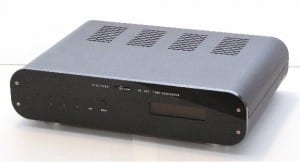 introduction of their latest DAC, the Digitube DSD (Direct Stream Digital).
introduction of their latest DAC, the Digitube DSD (Direct Stream Digital).
The new DAC is based on the 32 bit Dac from AKM and has an output circuit designed around vacuum tubes (ECC-81/12AT7).
The DAC accepts digital signals up to 192kHz/32bit and 384kHz/32 bit via USB. Also included are a word clock input and a SPDIF output.
T h e d i g i t a l i n p u t s :
– Spdif IEC-958 as RCA connector at resolution 192 Khz 24 bit
– Spdif IEC-958 as BNC connector at resolution 192 Khz 24 bit
– AES-EBU AES-3 as XLR connector at resolution 192 Khz 24 bit
– Opto toslink digital input at resolution 192 Khz 24 bit
– Asyncronous USB PC/MAC input at resolution 384 Khz 32 bit
Polish Hifi maverick Lampizator has announced two new products to add to their range of high-end audio products.
Lukasz Fikus, owner ad chief designer had the following to say about the Level 6 “…no compromise, ultimate attempt on  the state of art in music making. It is not about convenience, not about features and not about specs. It is only about music.”
the state of art in music making. It is not about convenience, not about features and not about specs. It is only about music.”
The level 6 is available only to special order with an estimated waiting time of 4 weeks. Price is €4900 (plus 20% Vat in UK)
The second product announced from Lampizator is the Silk AC filter with 4 outputs and for 230V. There is one CLC filter for each outlet “which not only filters the incoming signal but separates your gear from one another.” Price is €500 plus vat as a kit or €700 plus vat for the assembled unit.
Schiit Audio have announced its newest products, the $99 Magni headphone amplifier and the $99 Modi USB DAC. 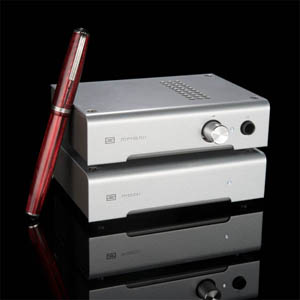 Magni offers a fully discrete design and Modi has an AKM4396 D/A converter and active filter output stage for driving long cable runs. Both products are made in the USA.
Magni offers a fully discrete design and Modi has an AKM4396 D/A converter and active filter output stage for driving long cable runs. Both products are made in the USA.
“We’re excited to debut Magni and Modi,” said Jason Stoddard, Schiit’s Co-Founder. “Since our expansion, we’ve been working on seeing how far we can push the price/performance barrier, and Magni and Modi are the result. Combining large-scale production runs with highly automated assembly and efficient chassis design have really paid off.”
Magni delivers 1.2W into 32 ohms, and is capable of driving many orthodynamic headphones, as well as offering >100dB signal to noise for compatibility with many IEMs. It includes a 115V-compatible “wall wart” style power adapter in its $99 price. In addition, its distortion performance is less than 0.004% at 1V out across the audio band, and its output impedance is less than 0.1 ohm.
Modi uses the same CM6631 USB input receiver as Schiit’s USB module, running in USB Audio 1.0 mode for driverless operation at all sample rates from 16/44.1 to 24/96, including 24/88.

